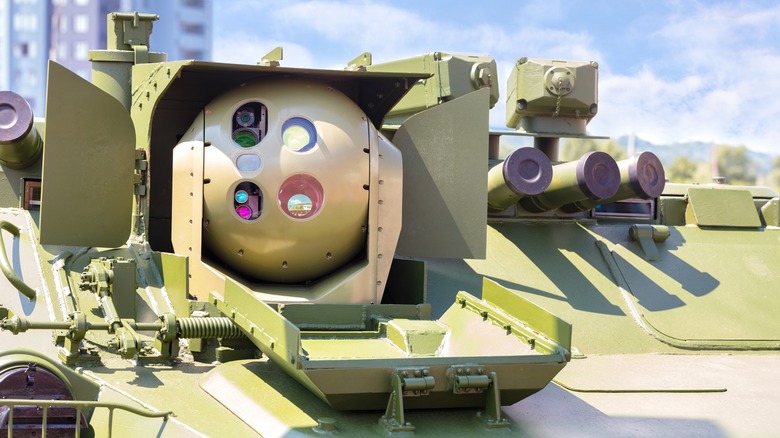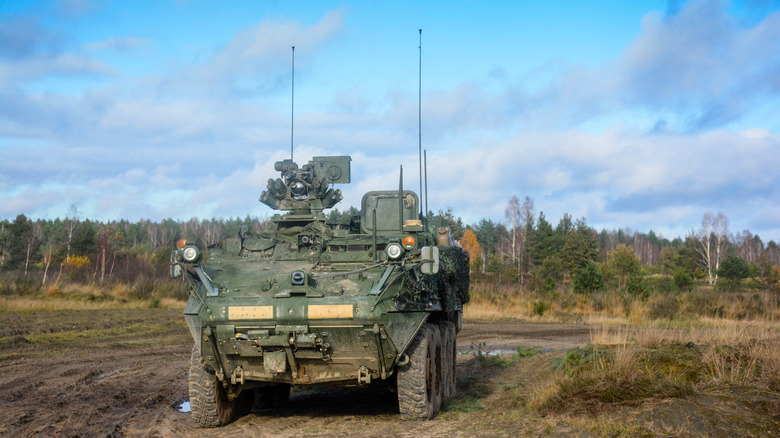
Sergii_Petruk/Shutterstock
Ever since the Light Amplification by Stimulated Emission of Radiation (LASER) was invented in 1958, science fiction has depicted them as all-powerful weapons of war. For most of the laser’s history, that’s been the stuff of fantasy, but improvements in the technology are making laser-based weapons a reality. While they’re still used for everyday things like pointing at PowerPoint slides, lasers might soon join the ranks on the battlefield as well. The U.S. is making that happen by developing laser armed vehicles soon to join the Army.
Advertisement
You might be imagining the Army replacing a tank’s main gun with a laser cannon, but that’s not the reality of the situation. Instead, lasers are primarily being looked at as a means of defense. Offensive lasers require an incredible amount of power, but defensive lasers are more practical. They require less power and are primarily used in air defense. Should the Army continue developing its program to create a viable, Enduring High Energy Laser (HEL), it will empower armored vehicles to shoot down incoming munitions and aircraft.
Drones are becoming an ever-present threat to operations on the battlefield, making HEL systems appealing. The ability to shoot down incoming threats while engaging targets on the ground is a game-changer for modern military operations. If the Army’s tests go well as it develops the HEL program with multiple contractors, there’s a good chance lasers will become as common on the battlefield as standard munitions, making them increasingly important in future military operations.
Advertisement
The Army’s hosting a competition to find the best laser tank

Ellen Brabo/Shutterstock
The Army began working with defense contractors for the development of HEL systems in the past few years. In 2023, Raytheon’s 50-kilowatt laser Directed Energy Maneuver Short-Range Air Defense (DE-M SHORAD) system prototype was mounted upon a Stryker combat vehicle and successfully shot down drones.
Advertisement
The goal is to create a viable 50-kilowatt defensive laser platform, but creating something like that isn’t without its own challenges. Army acquisition head Doug Bush told a Senate subcommittee, «What we’re finding is where the challenges are with directed energy at different power levels. That [50-kilowatt] power level is proving challenging to incorporate into a vehicle that has to move around constantly — the heat dissipation, the amount of electronics, kind of the wear and tear of a vehicle in a tactical environment versus a fixed site.»
It’s clear more testing is required. Interestingly, a 20-kilowatt Palletized High Energy Laser (P-HEL) the Army also tested proved more successful, though the system is fixed and cannot be moved. There was also a Cold War-era laser tank concept created by the Soviets decades ago, but it’s nowhere near as sophisticated as the modern projects the Army is looking to build. As progress continues, the Army will host a competition consisting of several contract agencies in 2025 to work independently or cooperatively to produce a higher-output laser system that works on a mobile platform against airborne threats.
Advertisement